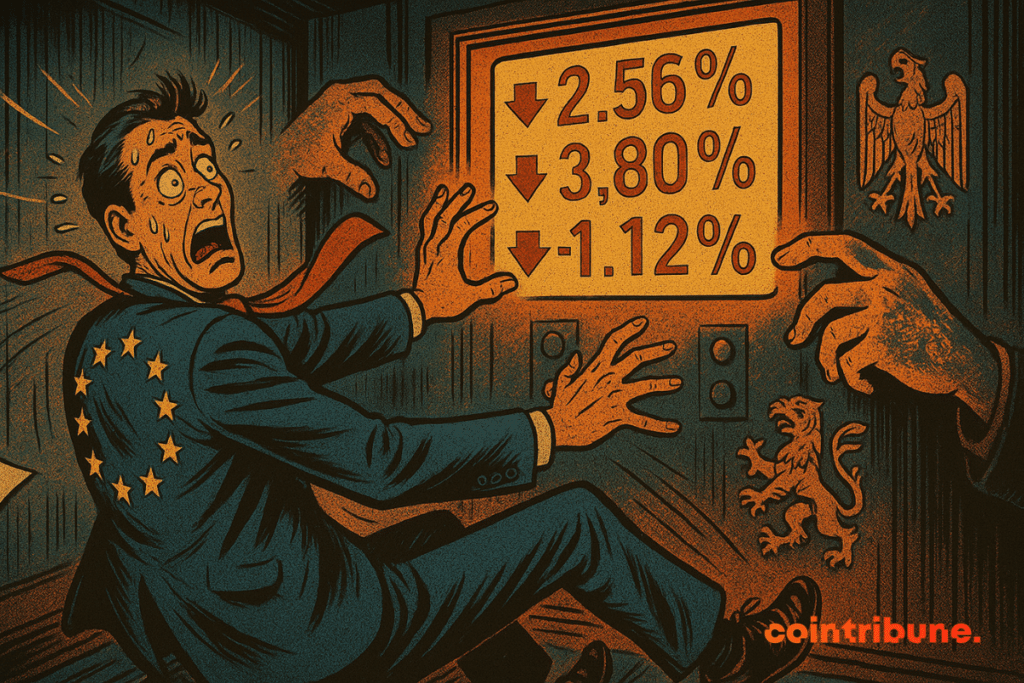European Markets Flatline as Traders Second-Guess Central Banks
Another day, another sideways grind—European indices can’t decide if inflation’s a threat or yesterday’s news. The Stoxx 600 might as well be a flatline on a heart monitor.
Rate-cut hopes? More like rate-cut maybe-laters. ECB officials keep jawboning about ’data dependence’—central banker code for ’we’ll flip a coin when the time comes.’
Meanwhile, bond traders are pricing in three cuts this year. Someone’s gonna be wrong—and given Wall Street’s track record, it’s probably the guys in suits.
Bonus jab: At this point, ’forward guidance’ just means ’we reserve the right to change our minds after your trades are placed.’ Classic finance.

In Brief
- European markets are moving in mixed order awaiting decisions from major central banks this week.
- The Fed is expected to keep rates steady, while a cut is anticipated from the Bank of England.
- The lack of major macroeconomic data reinforces investors’ wait-and-see stance.
- The return of aggressive trade rhetoric between Washington and Beijing fuels fears of a trade war.
Monetary wait-and-see : Europe suspended on Fed and BoE decisions
On Monday, European stock markets closed mixed amid a climate of expectation. In Paris, the CAC 40 fell 0.55 % to 7,727.93 points, while Frankfurt stood out with a 1.08% increase in the DAX.
This session without clear direction reflects the markets’ tense anticipation of the upcoming monetary policy meetings, notably those of the US Federal Reserve (Wednesday) and the Bank of England (Thursday).
Investors are mainly waiting for the monetary policy comments from the Fed and the BoE. Indeed, a consensus is forming around maintaining rates by the Fed, with a possible cut deferred to July, and a probable 0.25 point rate cut on the British side.
Markets are reacting little, lacking macroeconomic data able to force the hand of central banks. In this context, the following elements marked the session :
- CAC 40 : -0.55 %, affected by low volumes due to London’s closure ;
- DAX (Germany) : +1.08 %, helped by renewed political optimism following Friedrich Merz’s arrival at the chancellery ;
- EuroStoxx 50 : -0.03 %, illustrating general indecision in the eurozone ;
- German yields : the 10-year Bund remained stable at 2.5190 %, and the two-year slightly rose (+0.5 bp to 1.7730 %) ;
- Low volumes : the London market closure for a public holiday limited liquidity and accentuated investor hesitation.
In the absence of an immediate economic catalyst, attention is now focused on the speeches of central banks. Depending on their tone, these could rekindle volatility in traditional and crypto markets or conversely prolong this wait-and-see phase.
American protectionism : towards a new front in the trade war ?
While markets digest monetary uncertainty, another threat is gaining intensity: the return of an offensive American protectionism. This weekend, President Donald Trump announced new 100 % surtaxes on films produced outside the United States.
“American officials were in talks with many countries, including China,” he specified Sunday. He ruled out any imminent meeting with President Xi Jinping.
This renewed trade tension occurs in a context of persistent deadlock between Washington and Beijing, with no notable progress recorded in recent weeks. Caution remains warranted, especially since these announcements come at a particularly sensitive time for global markets.
Thus, the specter of a generalized tariff escalation weighs heavily on global economic expectations. The latest data from the eurozone indicate a slight rebound in investor sentiment in May, though still at a low level, weighed down by recent surtaxes decided by Washington.
In the United States, activity in the services sector unexpectedly grew in April, but prices paid by businesses reached an unprecedented peak in two years, fueling fears of an inflationary resurgence.
At the same time, oil prices fell, with Brent losing 2.38 % to 59.83 dollars, while WTI dropped 2.66 % to 56.74 dollars. OPEC+ indeed decided to continue increasing its production, but it is the prospect of demand contraction linked to a trade war that seems to dominate traders’ analysis.
This climate of tensions could have multiple short- and medium-term consequences. On the one hand, it fuels a new wave of caution in emerging markets and Asian currencies, beginning with the Taiwanese dollar, which gained ground Monday. On the other hand, it complicates the task of central banks: any rate cut aimed at supporting activity could be met with imported inflation. Finally, on the geopolitical level, the lack of structured dialogue between Washington and Beijing raises fears of a return to a cycle of tariff retaliations, which has not yet revealed all its side effects. If markets hold their breath awaiting central bank announcements, it is also because they fear the next spark may come from an entirely different ground: that of international trade tensions.
Maximize your Cointribune experience with our "Read to Earn" program! For every article you read, earn points and access exclusive rewards. Sign up now and start earning benefits.

